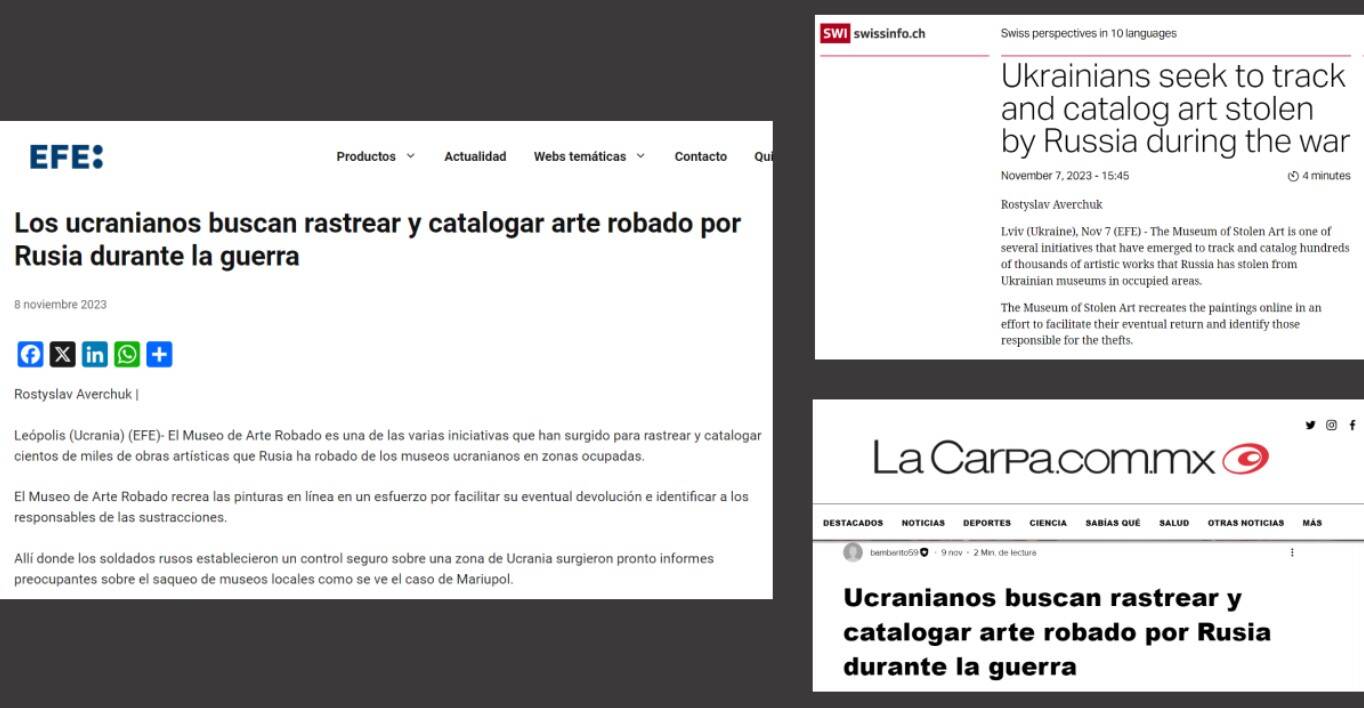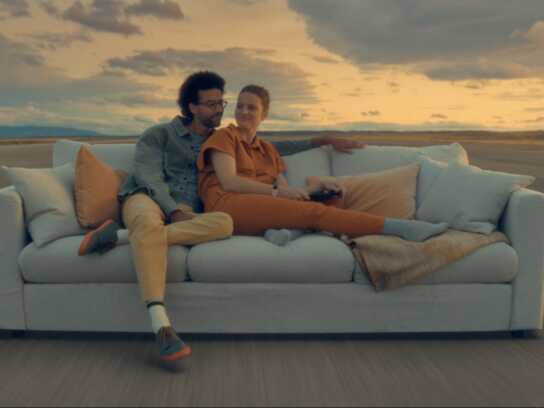Museum of Stolen Art — a virtual space of lost Ukrainian treasures
Agency: linza agency



Description
How did linza agency team create a cultural social project in the metaverse on their own.
The Museum of Stolen Art is a volunteer project aimed at fighting against Russian aggression that serves as a digital space for preserving and documenting crimes against Ukrainian culture.
Russia's full-scale invasion on February 24, 2022, was a crucial moment not only for millions of Ukrainians but also for many pieces of Ukrainian culture and art. Since the beginning of the full-scale invasion, the Russians have stolen tens of thousands of works of art in Ukraine, including artifacts that are over a thousand years old. According to the Ministry of Culture, exhibits from 40 Ukrainian museums have been stolen or destroyed (as of October 2022). Olena Zenchenko talks about this in more detail in EFE.
This is an incredible loss and tragedy for our people, so we have created a space where you can view the stolen works from anywhere in the world from any device, drawing attention to this topic in the international information space.
"This is not just an archive of stolen works, but an artistic rethinking of the crime committed by Russia against the Ukrainian people. We believe that our museum will be able to draw the world's attention to this problem and influence the process of returning these exhibits to their homeland," said Les Yakymchuk, co-founder and creative lead of linza agency.
“It is worth noting that the room with the artworks stolen from Mariupol is only the first part — a prototype. It is very difficult to explain to potential partners, including museum workers, what the idea of our project is, if nobody has done it before. That's why we decided as a team to create a prototype on our own and only then offer this start-up product to be developed together with the expert community”, said Ivanna Vlasiuk, producer at linza agency.
Creation of the Museum.
STEP 1: Technical process
“It was a set of different techniques. We didn't have a good exhibit that could be photographed from different angles, or 3D reconstructed, so we had to use references. And we found all these exhibits, all the textures, and all the photos of how they looked somewhere from fragments of videos on social media. For example, we didn't have photos of the Bible that was stolen, but there was a video that the museum workers themselves shot a few years ago, where they literally showed the inside of the Bible for 5 seconds, and then we took the photo, enlarged it, aligned it, and superimposed it on the 3D object”, said Oleksandra Tumyk, 3D designer.
Information about the stolen art is scattered and fragmented. To find digital copies, we had to piece it together: from consulting with museum experts to visiting hostile media resources that feature these works. It's almost a micro-investigation for each exhibit. Once the collection for the Museum had been assembled, we started creating a virtual space.
Stolen art cannot be exhibited in a real museum, and copies of works usually make audience feel they are looking at something fake and inauthentic. Instead, we offer an experience that is as close as possible to a real exhibition visit, accessible from any device and from anywhere in the world. Not to mention that the process of visiting feels like a game, where you can create a custom character and interact with other visitors in real time. This new tool also has huge interactive capabilities, and we plan to add quests and games that will be available in the space itself.
STEP 2: Preparing for the release
Our main task was to write a press release, texts, and personal letters for mailing to journalists and media, as well as prepare materials for social media to maximize the reach of the target audience. It was important to create visuals for the press and social media that would impressively reflect the essence of the museum. We developed a bilingual landing page and created Google forms for online tour registrations, which allowed people to choose a convenient time to visit the Museum.
We also did not forget about the preparation for the online tour, creating engaging storytelling for the event so that visitors could immerse themselves in the world of the Museum and learn more about the exhibits.
STEP 3: Release of the project
We sent out a press release inviting more than 500 contacts to the online tour and announced it in all of our social media channels. We managed to further increase the coverage by participating in additional activities, such as live broadcasts on radio, television, participation in events, etc.
Conducting several online tours turned out to be a key step in this process.
"An online tour is a format that allows participants to immerse themselves in the process as much as possible. On one hand, we can be on different continents and in different time zones, and on the other hand, we can communicate with each other in real time, ask questions and exchange emotions. I also think that a live tour, rather than descriptions or an audio guide, allows you to feel the idea and empathy for Ukraine as much as possible because one of our goals is to inspire empathy among Western audiences for the cultural losses during the war, so that in the future when it becomes possible to advocate for the restitution (return) of these objects to their homeland, we will have a community of lobbyists for this idea not only among Ukrainians but also abroad. ", — Olena Zenchenko, art director of linza agency, shares the details.
STEP 4: Tracking the results
In total, we received 40+ mentions in Ukrainian online media, 5 live broadcasts, a plot in the United News, and more than 20 mentions in the international information space (including El Mundo, Infobae, SWI). Our online tours of the space were attended by 207 people and lasted over 3 hours in total.
The overall coverage of the campaign exceeded 1,810,268 million.
In the future, we are planning to supplement this room (of Mariupol) with other exhibits in cooperation with museum workers and experts who have preserved the digitized works, as well as work on the following rooms - Kherson, Kharkiv, Sumy, and Zaporizhzhia regions. Many works of art were taken from Donetsk and Luhansk, the territory of the occupied Crimea, and this is a huge topic on which we plan to continue working, so this is just the beginning for the Museum of Stolen Art.
This professional campaign titled 'Museum of Stolen Art — a virtual space of lost Ukrainian treasures' was published in Ukraine in December, 2023. It was created by ad agency: linza agency. This Content, Digital, and Direct media campaign is related to the Other industry and contains 3 media assets. It was submitted 5 months ago.
Credits
Ira Shostak — CEO & Marketing lead, linza agency;
Les Yakymchuk — Creative Lead, linza agency;
Olena Zenchenko — Art Director, linza agency;
Ivanka Vlasiuk – Producer, linza agency;
Olexandra Tumyk — 3D designer;
Mykhailo Komarov — Creative Copywriter, linza agency;
Isabella Aronson — Head of PR, linza agency;
Anna Sovshchak — PR Manager, linza agency;
Alina Ivanchenko — Intern PR Manager, linza agency.







